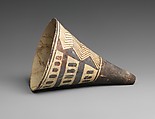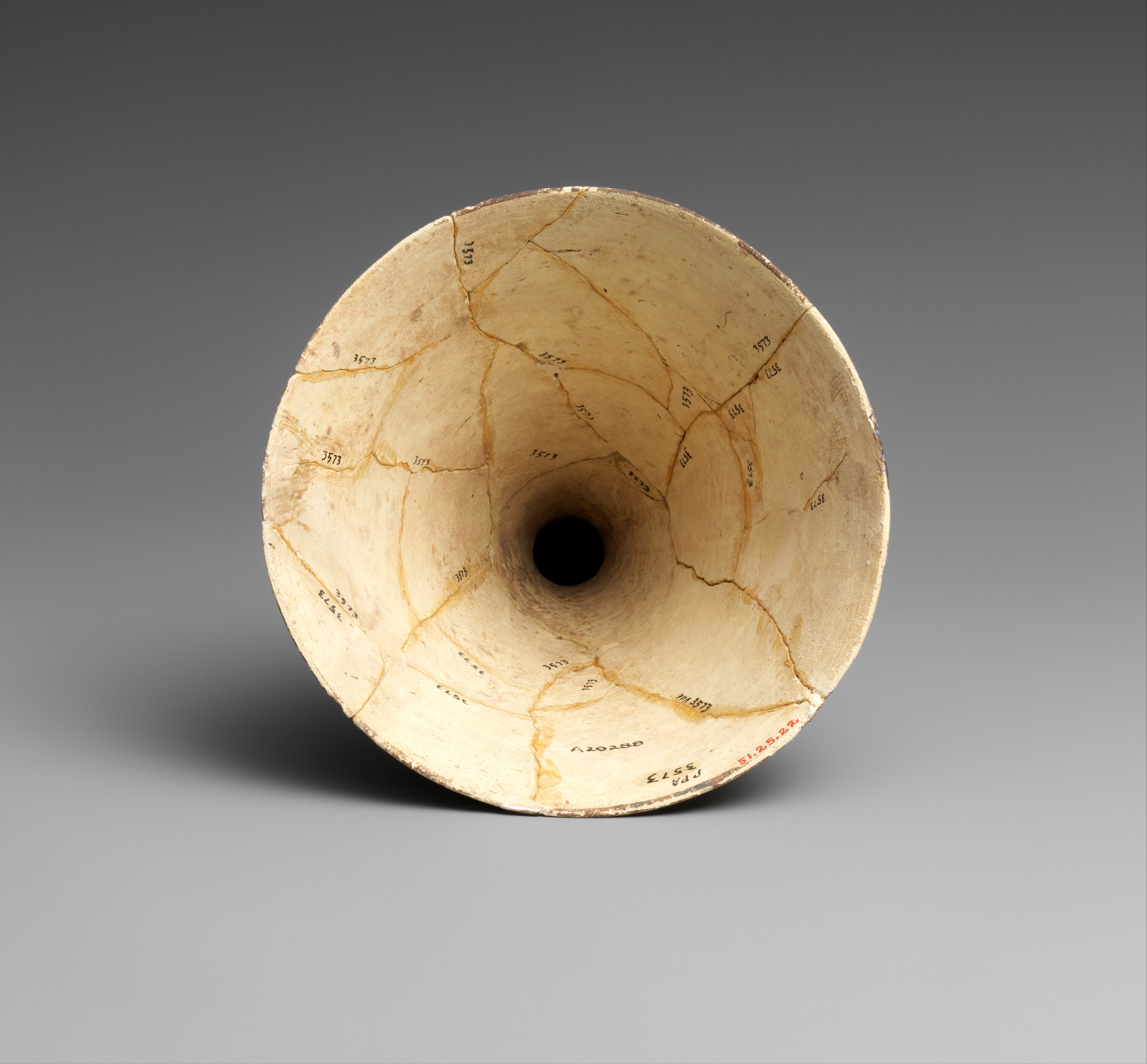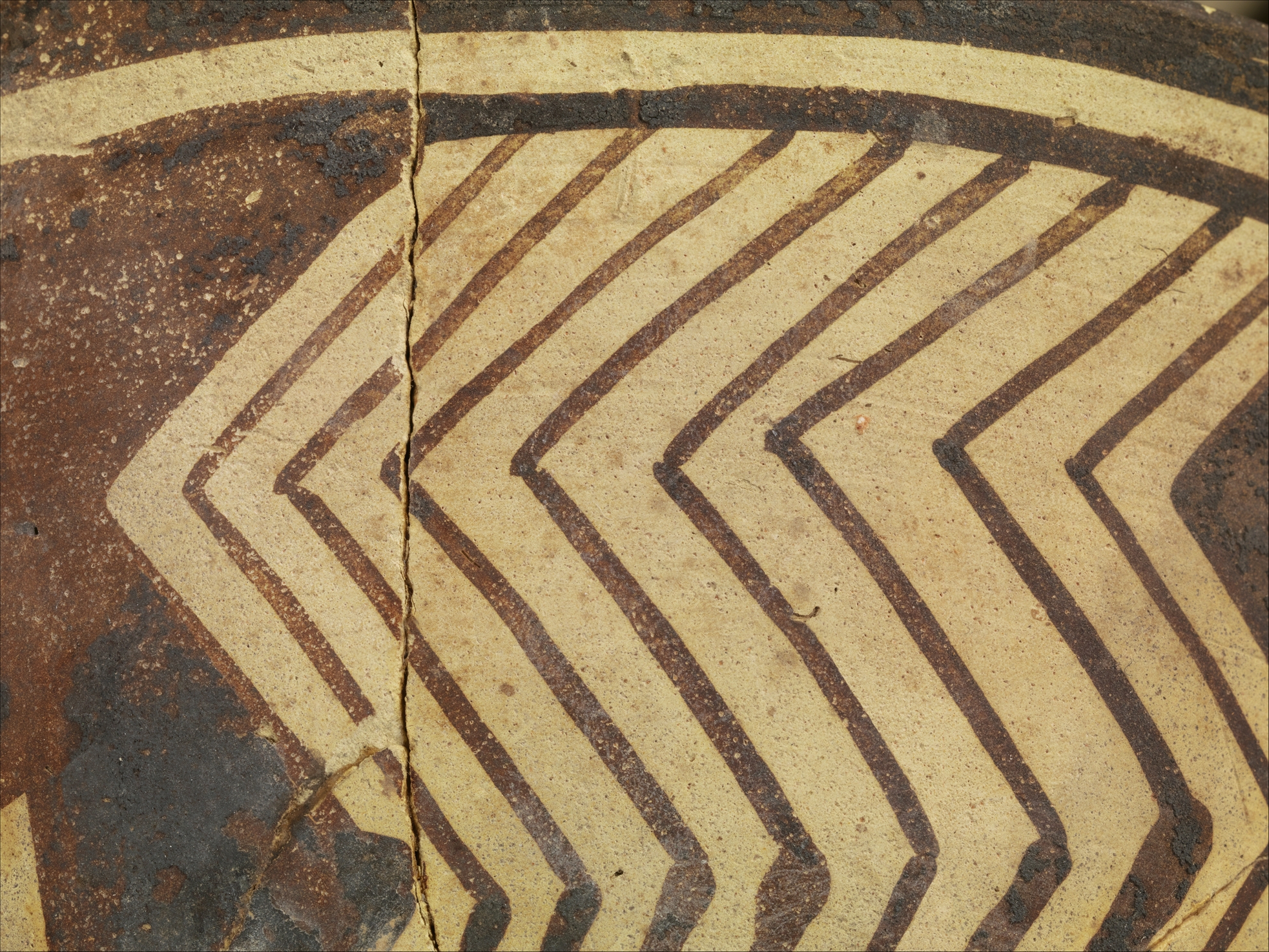Cone-shaped vase with geometric decoration
Not on view
This cone-shaped pot comes from a site near Persepolis called Tall-i Bakun A. Excavations conducted at the site in 1932 uncovered large amounts of prehistoric pottery, much of it in the form of complete, undamaged vessels still in place in storerooms, suggesting that the village was hastily abandoned in the ancient past. Like much of the pottery from Iran in the Chalcolithic Period (ca. 5500-3000 B.C.), ceramics from Tall-i Bakun A are remarkably varied in both form and decoration, attesting to the skill and creativity of the artisans in this early period. Conical vessels such as this one are among the most finely made, with almost eggshell-thin walls and crisply painted geometric decoration. A group of conical cups was stored in one room at the site with some nested in each other, suggesting they were used as a set. The sharply tapered end would not allow it to stand and hold liquid at the same time, so it must have been held while in use. Other remarkable finds from Tall-i Bakun A include stone stamp seals and lumps of clay that had been impressed with stamp seals, suggesting that the seals were not only personal objects but also administrative tools. In other words, they were used to indicate ownership of commodities stored within containers, by sealing the containers with lumps of clay and marking those clay lumps with a stamp seal impression.
Due to rights restrictions, this image cannot be enlarged, viewed at full screen, or downloaded.
This artwork is meant to be viewed from right to left. Scroll left to view more.





